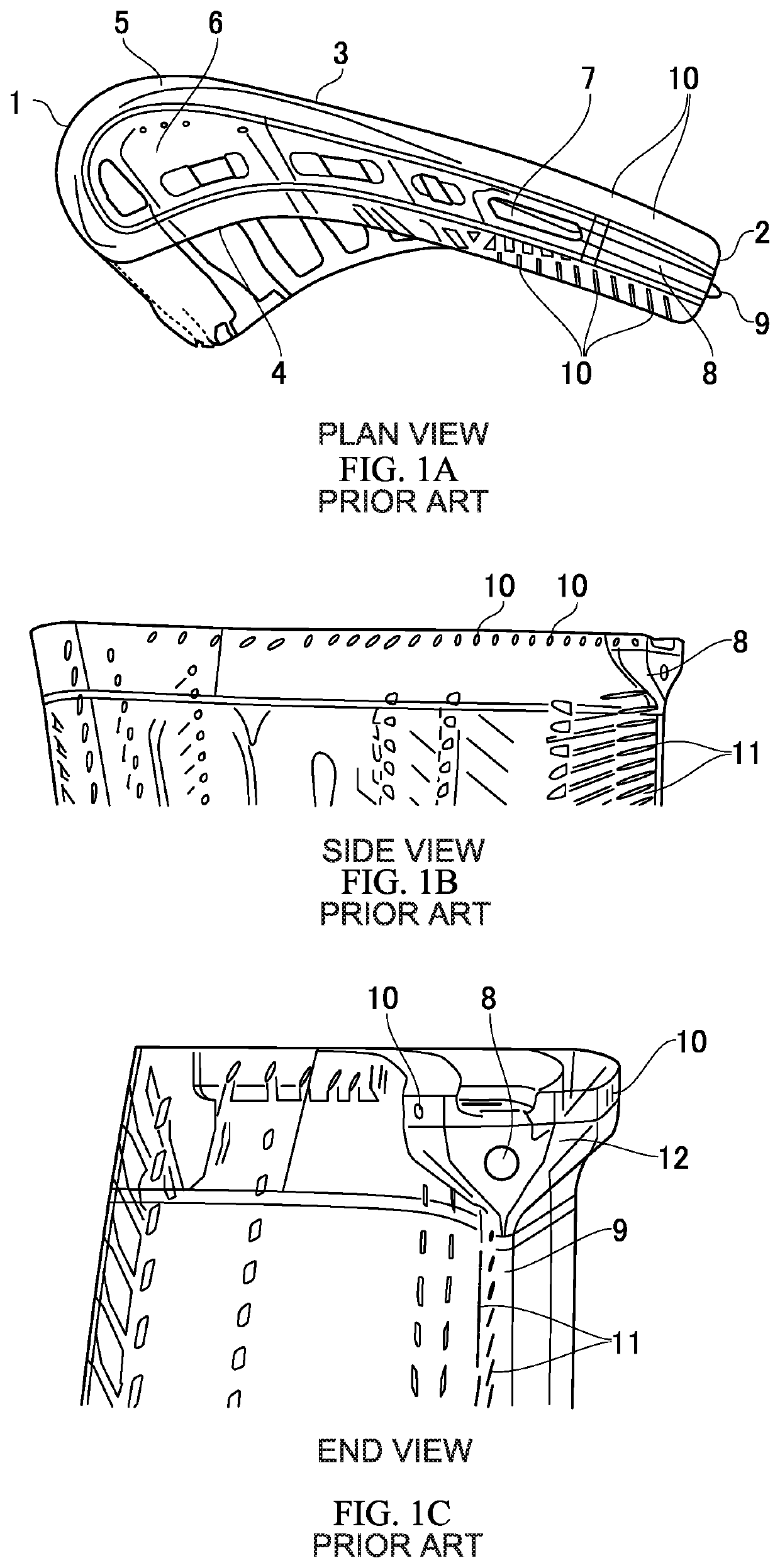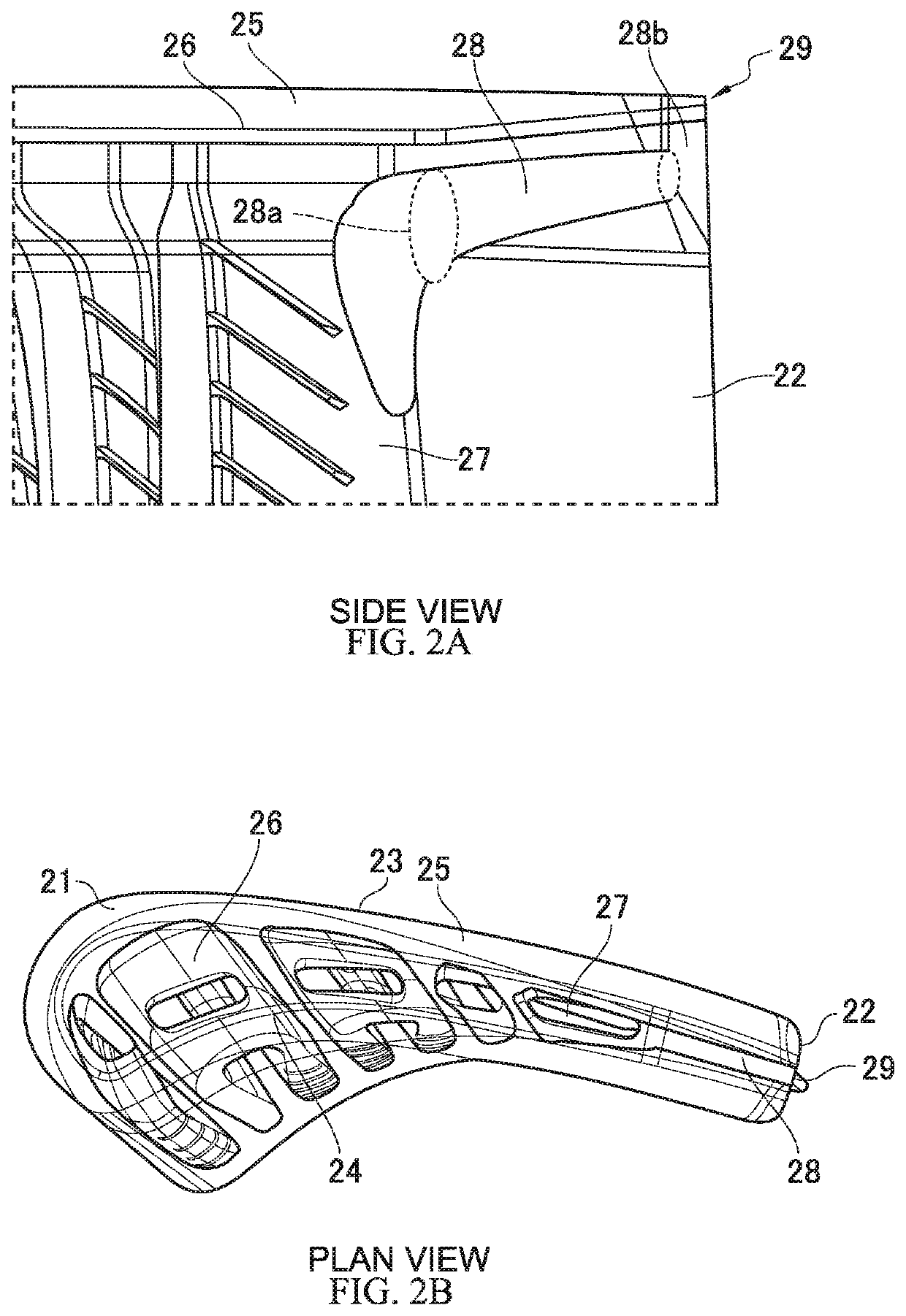Turbine blade cooling
a turbine blade and cooling technology, applied in the direction of blade accessories, engine fuctions, machines/engines, etc., can solve the problems of reducing the efficiency of the turbine assembly, reducing efficiency, and reducing the total loss of the turbine assembly by 30% or more, so as to achieve greater cooling, more film cooling channels, and greater flexibility in the arrangement of film cooling channels
- Summary
- Abstract
- Description
- Claims
- Application Information
AI Technical Summary
Benefits of technology
Problems solved by technology
Method used
Image
Examples
Embodiment Construction
[0031]FIG. 2 shows side and plan views of a blade tip configured in accordance with the invention. As can be seen, the tip includes a leading edge 21, a trailing edge 22, a suction side 23, a pressure side 24, and a squealer wall 25 extending around the perimeter of the tip. The squealer wall 25 bounds a gutter 26. Extending through the elongated portion of the blade in a root to tip direction is a main trailing edge cooling channel 27. The main trailing edge cooling channel 27 exits into the gutter 26. The main trailing edge cooling channel 27 is integrally cast into the blade, its shape being defined by a core positioned in a mould during casting of the blade. The core is subsequently leached out of the cast blade leaving the internal channel 27. As compared to the prior art, the core for manufacturing the illustrated embodiment is extended to include a gallery channel section which defines the gallery channel 28. The gallery channel has an open end 28a intersecting the main trail...
PUM
 Login to View More
Login to View More Abstract
Description
Claims
Application Information
 Login to View More
Login to View More - R&D
- Intellectual Property
- Life Sciences
- Materials
- Tech Scout
- Unparalleled Data Quality
- Higher Quality Content
- 60% Fewer Hallucinations
Browse by: Latest US Patents, China's latest patents, Technical Efficacy Thesaurus, Application Domain, Technology Topic, Popular Technical Reports.
© 2025 PatSnap. All rights reserved.Legal|Privacy policy|Modern Slavery Act Transparency Statement|Sitemap|About US| Contact US: help@patsnap.com



